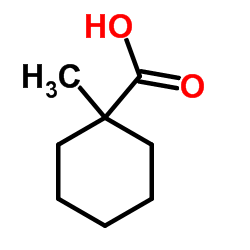Regulation of c- and N-myc expression during induced differentiation of murine neuroblastoma cells.
J C Larcher, J L Vayssière, L Lossouarn, F Gros, B Croizat
Index: Oncogene 6(4) , 633-8, (1991)
Full Text: HTML
Abstract
Using clones N1E-115 and N1A-103 from mouse neuroblastoma C1300, a comparative analysis of c- and N-myc gene expression was undertaken both in proliferating cells and in cultures exposed to conditions which induce differentiation. Under the latter conditions, while N1E-115 cells extend abundant neurites and express many biochemical features of mature neurons, clone N1A-103 stops dividing and expresses certain neurospecific markers but is unable to differentiate morphologically. In both clones, chemical agents, i.e. 1-methyl cyclohexane carboxylic acid (CCA) or dimethyl sulfoxide (DMSO), induce a decrease in c-myc expression. Similar results were found for N-myc gene in N1E-115 cells, but in contrast, in clone N1A-103, N-myc expression is increased with CCA and not modified with DMSO. Globally, this study favours the hypothesis that changes in c-myc expression would correspond to cell division blockade and differentiation, while modulations in N-myc are more closely related to an early phase of terminal differentiation.
Related Compounds
| Structure | Name/CAS No. | Molecular Formula | Articles |
|---|---|---|---|
 |
1-Methylcyclohexanecarboxylic acid
CAS:1123-25-7 |
C8H14O2 |
|
Human CYP2C9 and CYP2A6 mediate formation of the hepatotoxin...
1997-11-01 [J. Pharmacol. Exp. Ther. 283(2) , 698-703, (1997)] |
|
Induction of neutrophilic differentiation of human promyeloc...
1984-01-01 [J. Biol. Response Mod. 3(2) , 132-7, (1984)] |
|
Pharmacokinetics and pharmacodynamics of valproate analogs i...
1993-05-01 [Biopharm. Drug Dispos. 14(4) , 325-39, (1993)] |
|
[A method for determining arsenic in biological material].
1992-01-01 [Sud. Med. Ekspert. 35(1) , 31-2, (1992)] |
|
Pharmacokinetics and pharmacodynamics of valproate analogues...
1994-01-01 [Epilepsia 35(1) , 234-43, (1994)] |